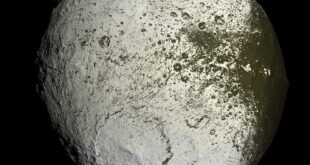10 Unbelievable Facts About Comets You Need to Know
1. Comets are not actually stars
Comets are celestial objects that consist of ice, dust, and gas. Despite their nickname “dirty snowballs,” comets are fascinating objects that can travel over billions of miles from the outermost regions of the Solar System.
2. Comets have two tails
When a comet approaches the Sun, it produces both a dust tail and an ion tail. The former tails have dust particles that are grinded out of the comet’s surface due to ice vapo rizing at increasing rates as its proximity to the Sun increases. The dust tail has larger particles and tends to be somewhat curved on its outer edge because of the force of sunlight.
3. They can be bigger than planets
Comets are incredibly diverse; some can be as small as sand particles whereas others can be larger than the largest planet in our Solar System, Jupiter. Comets with smaller size to earth size are becoming smaller over time by removing their short tail.
4. They have weird, long names
Comets follow a naming convention that includes the discoverer’s name followed by the year of discovery and the order of its discovery that year. One has a name of “Comet Hale-Bopp discovered by Alan Hale and Thomas Bopp in 1995”.
5. The mention of Comet Ke recently
Accepting the Ke Comet System, Ke may cause flowing things to evacuate from the organization of bigger, fundamental frameworks like cosmic systems shedding hydrogen.”
6. A comet’s orbit may take years
Comet-Swift-Tuttle has a massive orbit of 120 years. While Halley with a condensed period is 75.3 years tops multiple other voyages that stretch as far 75,000 years per completed orbit.
7. According to passed writing comets result in tides
Edmond Halley in AD 1705 connected the tide-raising force on the oceans, sort of exhibiting what huge effect gravity has from heavenly items including comets.
8. Collision caused the line-of-falling meteors and meteor showers
Halley also concluded that Meteor showers such as the Orionids, Lyrids, Leonids, Draconids or Taurids occur caused by comet particles by following the path or rotating debris it scattered during a rendezvous with other orbitues.
9. The dawn of the solar system triggered comets
Comets formed during the early solar system era 4.6 billion years ago. Scientists believe that these ancient comets record invaluable ancient trends of the retouching process.
10. Comets Have Colorful Names
It is this remarkable summit about comets names; researchers at NASA deployed the Stardust spaceship to return some minuscule leftover molecules of Comet Wild 2 also Comet Tempel 1 rocket droplets from that comet’s formation from under the microscope in 2004.
 Mind Uncharted Explore. Discover. Learn.
Mind Uncharted Explore. Discover. Learn.



